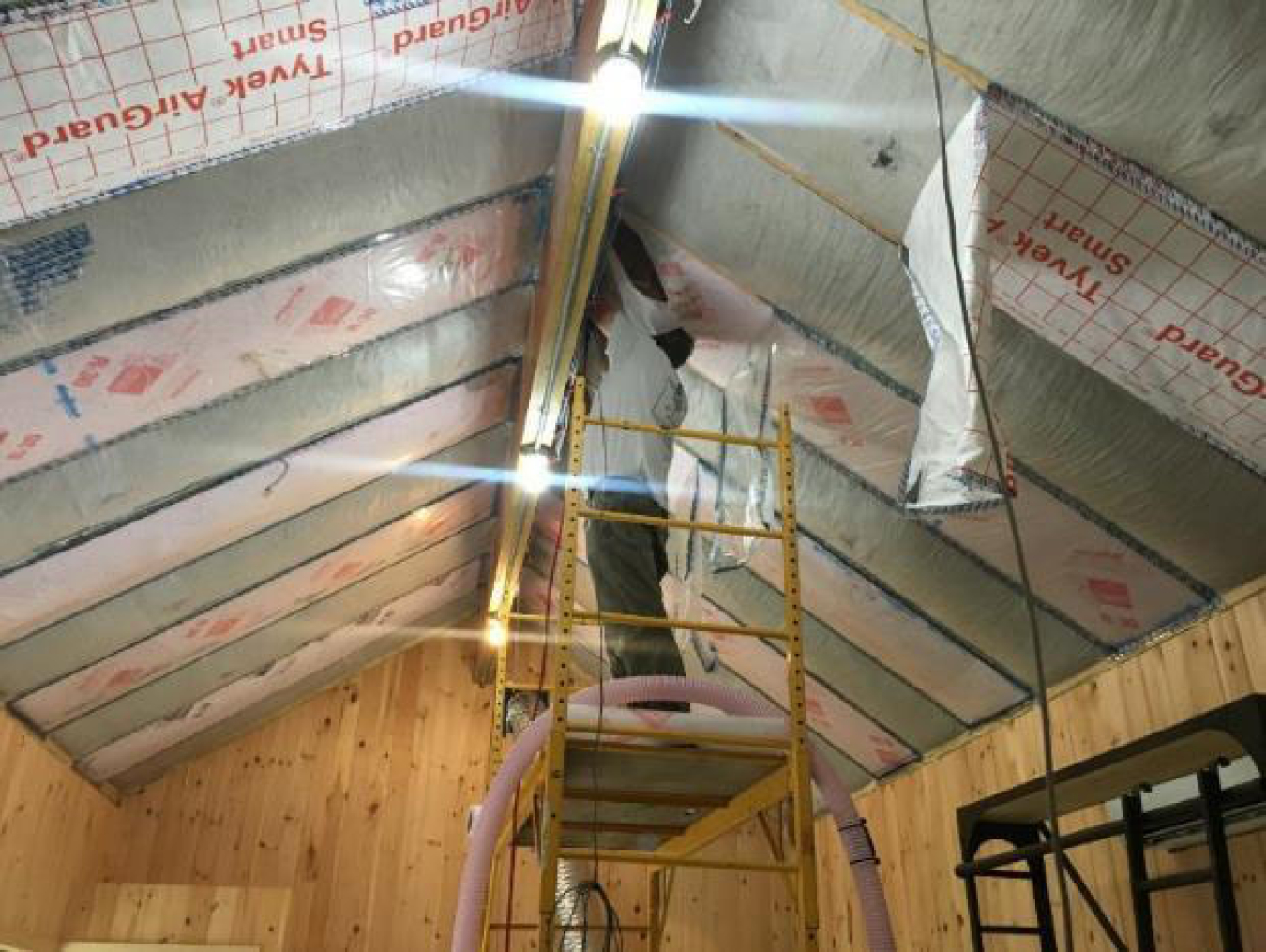Building America Team: Building Science Corporation
Partners: North American Insulation Manufacturers Association, Nu-Wool, Dupont, Owens Corning, Cosella-Dörken, and Hovnanian Homes

The key goals and objectives of this project are to determine whether:
- Fibrous insulation can be used to create moisture-safe roof assemblies in a cold location (Climate Zone 5A)
- Insulation material (blown-in fiberglass versus dense-pack cellulose) has a significant effect on moisture levels
- The assemblies show a robust response to typical imperfections in construction practices (i.e., air leakage) and, if so, present recommendations on air leakage limits
- The tested vapor control materials provide adequate wintertime vapor control or “throttling” and if they allow sufficient downward drying during summer
- There are recommended limits on interior operating conditions given these assemblies (e.g., maximum wintertime relative humidity (RH) or dew point)
- The diffusion vent detail should be required for widespread adoption or if it is unnecessary, given the other moisture vapor control components of the assembly.
Research will determine how fibrous insulation can be effective for moisture control in cold climates.
Current progress:
- Unvented roof assemblies with fibrous insulation tested over three winters, with 50% RH in winter 2 and increased air leakage in winter 3
- Diffusion vent plus variable-perm vapor retarder is safest for moisture management
- At higher interior RHs, roofs accumulate moisture in the risk range
- Disassembly after winter 2 revealed mold growth on sheathing and framing
- Airtightness of interior vapor control critical for moisture performance
- Code-compliant spray foam roof safest by far.
Although previous research has validated this technology in hot-humid climates, roof assemblies with fibrous insulation cannot be confidently recommended for cold climates, because diffusion vents and variable-perm vapor retarders do not adequately manage moisture in scenarios with elevated interior RH.
Remaining work:
- Continue data collection, observe summer dry-down
- Decommission and disassemble sheathing conditions and airflow pathways in insulation
- Final data analysis and recommendations
- Share results/recommendations with industry stakeholders.
For more information, project presentations, and related publications, visit the Monitoring of Unvented Roofs with Diffusion Vents and Interior Vapor Control in a Cold Climate web page.

